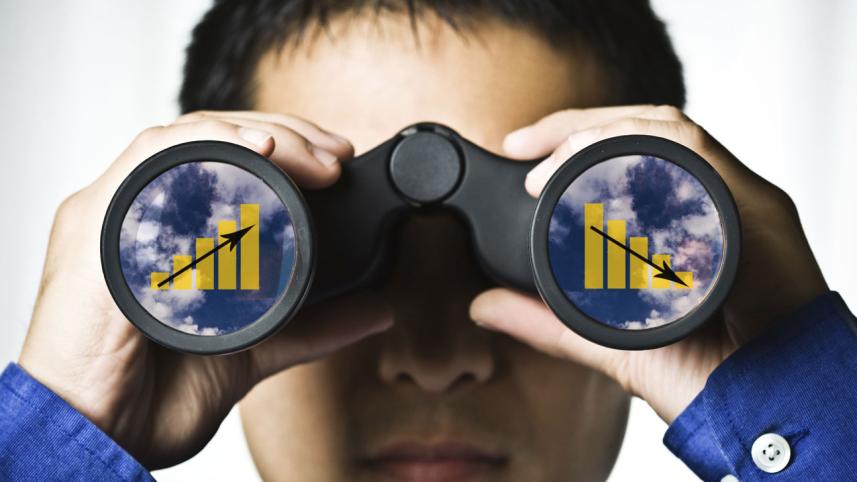Why economists differ so widely

PROJECTING an economic outlook in early January is a New Year tradition. While political forecasts are not too divergent, economists differ remarkably to portray the future in a new year, resulting in common curiosity. Economists can be divided into four groups of forecasters: ambitious, moderate, conservative, and pessimistic – as we saw in the predictions of Bangladesh's economy in 2016.
The economy has gained noticeable stability in major macro-variables such as growth, inflation, and the exchange rate. We do not expect wide deviations in these variables. Growth is on an upward trend, while inflation is on the downward and the exchange rate is almost static. Interest rates are likely to fall but slowly. Investments are likely to pick up after a period of correction to take advantage of the existing macro stability. If perceptible improvements in energy, gas and infrastructure can be ensured, private credit will speed up for sure. People expect better administration of the existing infrastructure. Better traffic discipline in two megacities and in the 4-lane highways can ensure at least an additional 1 to 2 percentage points in growth rate for the nation, sending our economic growth to 8 percent.
These assertions give a moderately prospective picture for Bangladesh when the whole Europe is likely to languish in recession and so is part of Latin America. The US predicts its growth to be slightly over 2 percent. Bangladesh is trailing behind India in investment and growth, but doing much better than Pakistan in most major economic indicators. However, many economists do not consider Bangladesh's relatively better performance from that judgment. They raise different negative aspects, giving them more weight. Then again, some economists are politically motivated and their predictions lack dispassionate judgment, econometric exercises, sound theory, and modern analytical tools. Some economists predict euphorically, like radical politicians, when predicting the country's economic future in this year. Both the polar-case opinions can be brushed aside or should be taken with a grain of salt.
There is a saying that six economists will come up with seven opinions. People quote it jocularly but many of us fail to see that numerous opinions are natural to economics due to various observations, assumptions, and models. This write-up hopes to explain the reasons behind the differences observed in economic predictions.
Let us take Bangladesh as a test-case to predict its growth over 2016. Economic growth is a complex variable that comes up after adding consumption, investment, government spending, exports and imports [Y = C + I + G + X – M]. Say, one economist observes stagnancy in investment. He may find 2016 to be a bleak year with slow growth. Another economist sees the same state of dullness in investment, but he may not necessarily project slow growth if he senses a boost in consumption which represents more than 70 percent of GDP – much higher than investment's 29 percent share in GDP. An open economy may hugely benefit from increased exports even if both consumption and investment show lukewarm performances. Sometimes, higher government spending, as suggested in Keynesian economics, may alone pull an economy that is supposed to languish otherwise.
The main point of this argument is to show that viewing the same economy from different angles is only natural in economics – a social science that includes interaction of human peculiarities in the material world. People may not take the right course of action desired for the economy. During the great recession of 2007-2009, when the US government failed to stimulate investment, President Obama called on the citizens to not stash away money in their mattresses. He wanted his people to consume more and thus save less, believing in the Keynesian suggestion that saving is a vice during recession [Saving = income – consumption].
Who, however, listens to the president? A saving rate of 2.5 percent that prevailed in the pre-crisis period rather jumped up to 7.5 percent during the recession, justifying our mindset of austerity and saving insurance when uncertainty looms large. Economist Paul Krugman also preached Keynesian economics to save less by consuming more over depressive episodes. Economic agents often play up some strategies opposite to the government's wishes. Saving rates in the US always climbed up during the recessions of mid-1970s, early 1980s, and late 2000s. Since economic agents may interact in an unpredictable way, without following the timely rationale for the country's economy, little wonder that their prognoses for the year are likely to follow different trajectories.
Theoretically, Bangladesh should attract more foreign investments than India, because Bangladesh's stability in growth, inflation, and exchange rate is higher than that of India. That did not happen. Bangladesh's growth path displayed lower volatility since liberalisation, though openness is likely to trigger higher volatility in more complex periods of uncertainty. Theoretically, Bangladesh should attract more capital inflows due to higher interest rates. That did not happen either. Instead, the US-lowered interest rates fell drastically and the country still drew more capital inflow – a situation economist Ben Bernanke labeled as a "saving glut."
Given these anomalies, and the interaction of human peculiarities, expectations-driven actions and mismatch between theory and practice, predicting the economy in a new year becomes a difficult job. And even then, these predictions are likely to differ widely. No surprise there!
......................................................................................
The writer is chief economist of Bangladesh Bank.




 For all latest news, follow The Daily Star's Google News channel.
For all latest news, follow The Daily Star's Google News channel.
Comments